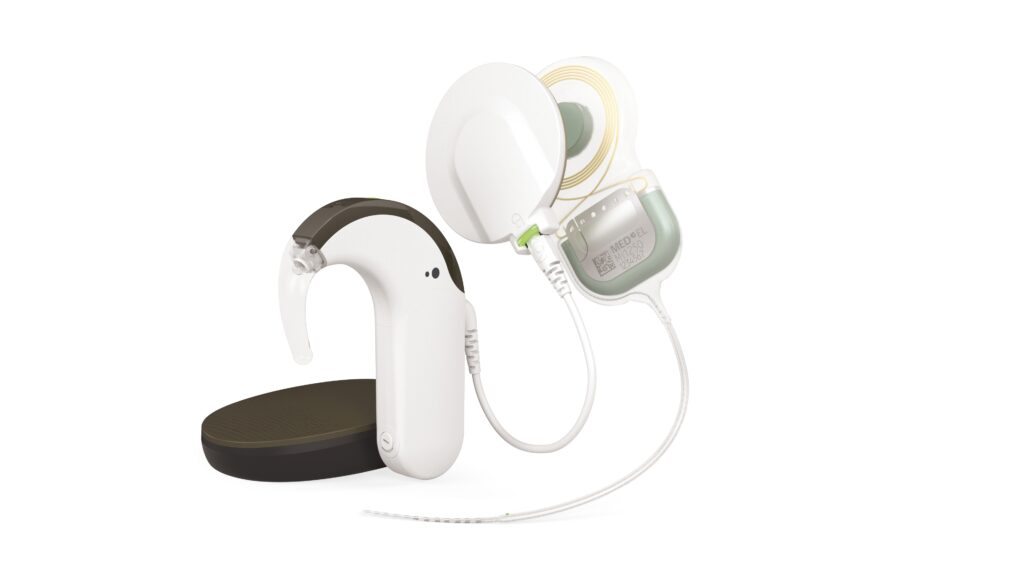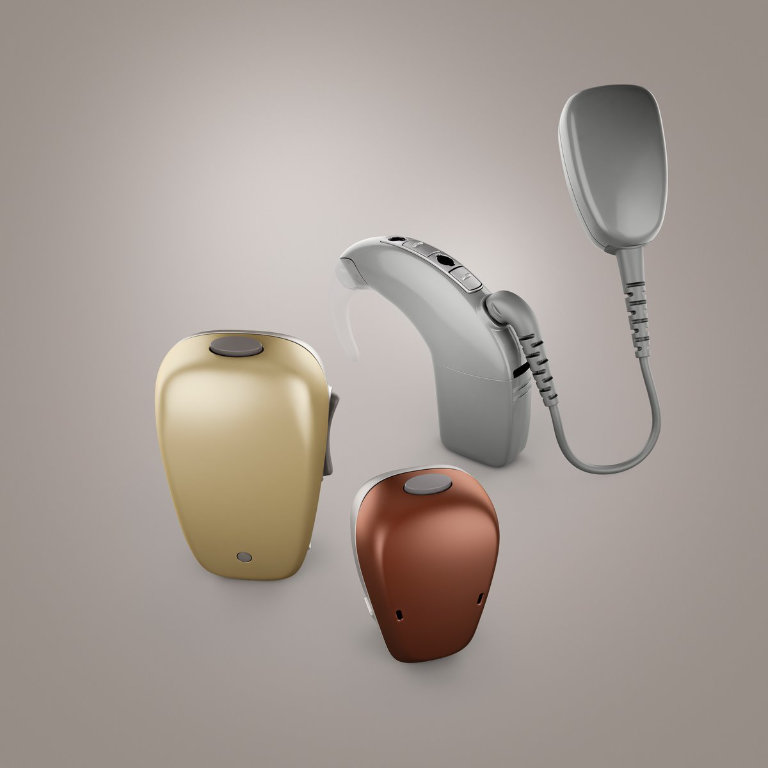Latest News
- How does a middle ear implant (MEI) work?
For conductive or mixed hearing loss:
Middle ear implants (MEI) work by directly vibrating the bones or structure in the middle ear, bypassing the damaged or blocked parts of the outer or middle ear, and getting sound straight to where it’s supposed to go to i.e. to the inner ear (cochlea). The tiny vibrating component of the implant is typically coupled onto the incus (a middle ear bone), though in certain cases it may need to put onto a different structure in the middle ear. This depends on CT scans and/or findings during the operation itself. The surgery to implant a MEI is a very delicate procedure and typically takes longer than a bone conduction hearing implant surgery for this reason.
The implant converts sound into vibrations which are then transmitted to the inner ear (cochlea). This stimulates the auditory nerve and allows the brain to perceive and interpret sound.
Middle ear implants work differently to bone conduction hearing implants, because they stimulate the specific ear that the implant has been surgically placed on – this can potentially help with ability to interpret sound in background noise (especially if the patient has normal hearing, a hearing aid or another MEI on the other side) and with the ability to localise where sound is coming from.
Video Copyright MED-EL 2024 For sensorineural hearing loss:
The MEI works in the same way as described above i.e. the middle ear is directly stimulated via a small vibrating component which sends the sound to the inner ear. A MEI is an option particularly for patients who cannot tolerate or wear conventional hearing aids i.e. normal hearing aids. This may be because the normal hearing aid is causing an allergic reaction or outer ear inflammation; or because the outer ear has not formed properly (i.e. microtia/ atresia – as long as the middle ear is healthy and intact). It is important to note that MEI cannot be surgically implanted in cases of profound sensorineural hearing loss (because the cochlea won’t be able to pick up the sound sufficiently). It is also not suitable for patients who have active middle ear infections.
Ask your audiologist whether you may be suitable for this implant. Please note that assessments for MEI can be long, and may involve several appointments and/or scans which will then be discussed in a multidisciplinary team meeting with the ear-nose-and-throat (ENT) surgeon.
We are the Yorkshire Auditory Implant Service
The Yorkshire Auditory Implant Service (YAIS) was established at Bradford Royal Infirmary in 1990 and supports families and children from Yorkshire and surrounding regions. YAIS have developed nationally recognised programmes for both adults and children.

Welcome to YAIS
At the Yorkshire Auditory Implant Service we strive to offer a flexible service guided by the needs of the individual child or adult whilst maintaining quality standards.
How can we help you?
Our Multidisciplinary Team includes:
- Consultant ENT Surgeons
- Head of Service
- Clinical Scientists (Audiology)
- Teachers of the Deaf
- Speech and Language Therapists
- Technicians
- Assistant Rehabilitationist
We also have access to:
- Interpreters
- Clinical and Educational Psychologist
- Radiography Department
The whole process of initial assessment, fitting the implant and rehabilitation involves the patient and families working with the team in a variety of settings including the hospital, home and for children the school. This demands a high level of commitment from everyone involved.
Through working in partnership a caring and committed service is provided for each individual.

